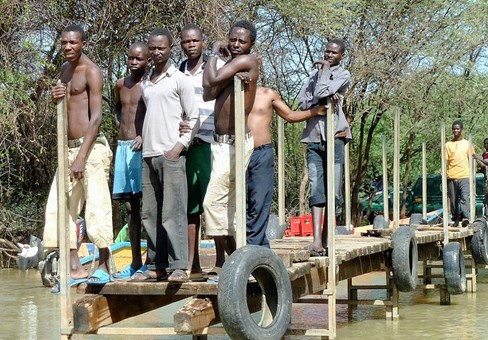Stickers: low cost, great psychology, safety campaign
Author: CIMCOM
 It’s easy to be blown away by the latest multi-million-pound marketing campaign. High spends enable the message to seemingly be everywhere, with campaign messages seeping into your psyche through the brute force power of constant repetition across channels. Yet every now and then we’re floored by a creative idea that’s a beacon of communication excellence, and all on a tiny budget. Take the Kenyan campaign to improve road safety.
It’s easy to be blown away by the latest multi-million-pound marketing campaign. High spends enable the message to seemingly be everywhere, with campaign messages seeping into your psyche through the brute force power of constant repetition across channels. Yet every now and then we’re floored by a creative idea that’s a beacon of communication excellence, and all on a tiny budget. Take the Kenyan campaign to improve road safety.
Watch the video by Richard Kenny for BBC World Hacks:
The magic words that reduce road deaths.
The problem
There are around 40,000 mini-buses known as matatus operating in Kenya, with around 300,000 people using public transport each day. Matatus are known to be at the root of many road accidents, making them a hazard for the safety of passengers and road users. Around 30% of passengers in a pre-campaign study felt their life had been at risk on a recent matatu trip.
In more general terms, driving on African roads is recognised to cause more deaths than malaria. Around 13,000 die on Kenyan roads each year according to the World Health Organisation.
But changing road infrastructure and driver retraining programmes are costly and the impact takes time to filter through which makes solving the issue problematic.
The creative solution – Zusha!
- The logical thinking is that a shift in driving behaviour is required.
- The creative thinking is that passengers can be motivated to play a key role.
- The practical execution is that well-designed stickers on vehicles can be the key communication method.
So, stickers were placed inside buses to urge passengers to call out bad driving.
Zusha is Swahili for ‘Protest’.
The Zusha sticker campaign came about through a collaboration of innovators and safety campaigners, including researchers at Georgetown University’s innovation initiative, backers such as USAID the US agency for international development, and supporters like the Kenyan NTSA (National Transport and Safety Authority).
The message to passengers – Speak up!
Stickers were designed with images of crashed vehicles and injured people, together with safety messages in English and Swahili, such as:
“Prevent an accident now.
Speak up against reckless matatu driving.”
“If only passengers spoke up…
speak up now while you still can!”
“Don’t end up a victim
of dangerous driving.”
“You have the power
to slow down a reckless driver.”
“Don’t let a reckless driver
get away with murder”
The message to drivers – tolerate the stickers and win!
A weekly lottery was run with a prize of 5,000 Kenyan shillings, equivalent to one week’s wages.
Drivers who retained stickers inside buses, were in with the chance of winning.
The result
It worked! Buses with stickers have significantly less accidents and the scheme has been expanded nationally and to three more countries.
Phase 1 – stickered v non-stickered matatus
Initially a two-year pilot study, was conducted which involved 2,400 vehicles. Half had stickers fixed inside them, and half didn’t. Claims data was gathered independently from four insurance companies who comprised 90% of the vehicles covered. According to USAID, “Road accident insurance claims fell by half, and claims involving injury or death dropped by two-thirds.”
- All insurance claims fell by 50-66%
- Claims involving injury or death fell by 60%
Phase 2 – expansion of campaign
The pilot was expanded to 12,000 vehicles in Kenya and backed by a radio campaign, in the campaign’s second phase, in partnership with Directline Assurance, Royal Media Services, and ASIRT-Kenya, and with support from Development Innovation Ventures at USAID. Again, insurance claims were used to validate the campaign.
In the vehicles with stickers:
- All insurance claims fell by 25-33%
- The effect of the stickers was equivalent to avoiding 140 accidents and saving 55 lives per year
- Maximum speed was 1-2 km per hour lower on average
Phase 3 – campaign expands across borders
With robust empirical data on the campaign’s positive impact, a further grant from USAID supports the third phase of the campaign in Kenya. Due to the initiative’s success, this grant also funds expansion of the campaign in neighbouring Tanzania, Uganda and Rwanda.
You can read the phase 1 and phase 2 results reports on the Zusha website.
Clarity of thinking, an eminently practical campaign and incredibly robust measurement make this campaign stand out. It just goes to show that when a campaign appears incredibly simple, its often because the people behind it have found a smart way through the complexity with a unifying creative idea.